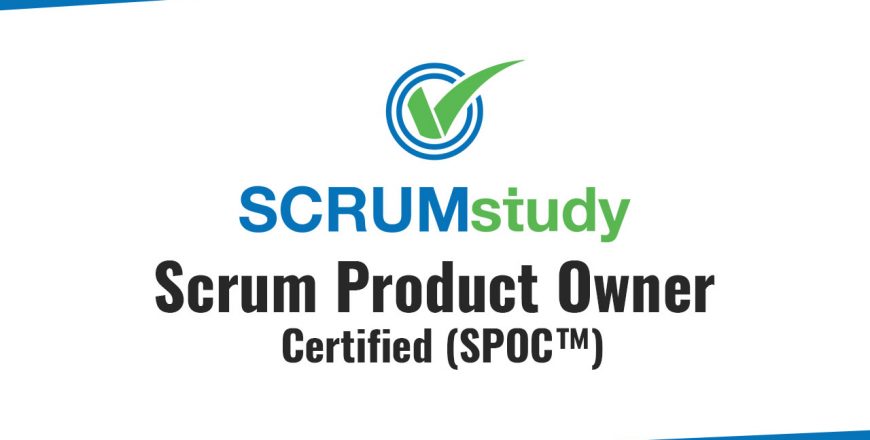Scrum Product Owner Certified SPOC™

Scrum Product Owner Certified (SPOC™) Course Overview
Scrum Product Owner Certified (SPOC™) certification exam is designed to confirm applicants
practical and working knowledge of Scrum that equips them to handle the business aspects and
stakeholders in a Scrum environment.
Product Owner represents the interests of the stakeholders in the Scrum Team. Commonly called
‘the voice of the customer’, the Product Owner is responsible for ensuring clear communication of
product or service functionality requirements. The Product Owner also prioritizes the requirements
from the point of view of an end user, for maximum business benefit, defines the Acceptance
Criteria, and ensuring those criteria are met.
Applicants will be awarded the Scrum Product Owner Certified (SPOC™) certificate by SCRUMstudy
upon successfully passing the certification exam.
Exam Format
● Multiple Choice
● 140 questions per exam
● One mark awarded for every right answer
● No negative marks for wrong answers
● 180 minutes duration
● Proctored online exam.
● Current Pass Rate: 93%
Audience Profile : This certification is for anyone who interfaces with stakeholders or works as a Product Owner in a
Scrum Team.
Prerequisites : There is no formal prerequisite for this certification. However, SDC™ or SMC™ Certified professionals
will be able to better understand the concepts required for this certification exam. It is also highly
recommended to attend a 2-day SPOC™ classroom training provided by a SCRUMstudy approved
Authorized Training Partner (A.T.P.)
Expected Outcome: The participants will be prepared to take SPOC™ certification exam and pass.
Also they will be able to apply the concepts in their day to day job.
Maintaining Certification: To maintain the certification status, Scrum Product Owner Certified
(SPOC™) professionals will need to earn 40 re-certification credits every 3 years.



